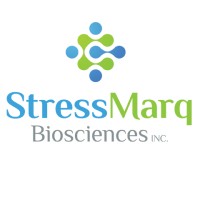Collagen IV Polyclonal / PerCP /
Product Details
| Description | Rabbit Anti-Human Collagen IV Polyclonal | |
|---|---|---|
| Conjugate | PerCP | |
| Clone | ||
| Target Species | Human, Mouse | |
| Applications | ELISA, WB, IHC | |
| Supplier | Stressmarq | |
| Catalog # | Sign in to view product details, citations, and spectra | |
| Size | ||
| Price | ||
| Antigen | ||
| Host | ||
| Isotype |
About Collagen IV
Type IV collagen, the major structural component of basement membranes, is a multimeric protein composed of 3 alpha subunits. These subunits are encoded by 6 different genes, alpha 1 through alpha 6, each of which can form a triple helix structure with 2 other subunits to form type IV collagen. This gene encodes alpha 3. In the Goodpasture syndrome, autoantibodies bind to the collagen molecules in the basement membranes of alveoli and glomeruli. The epitopes that elicit these autoantibodies are localized largely to the non-collagenous C-terminal domain of the protein. A specific kinase phosphorylates amino acids in this same C-terminal region and the expression of this kinase is upregulated during pathogenesis. This gene is also linked to an autosomal recessive form of Alport syndrome. The mutations contributing to this syndrome are also located within the exons that encode this C-terminal region. Like the other members of the type IV collagen gene family, this gene is organized in a head-to-head conformation with another type IV collagen gene so that each gene pair shares a common promoter. [provided by RefSeq, Jun 2010]
Type IV collagen, the major structural component of basement membranes, is a multimeric protein composed of 3 alpha subunits. These subunits are encoded by 6 different genes, alpha 1 through alpha 6, each of which can form a triple helix structure with 2 other subunits to form type IV collagen. This gene encodes alpha 3. In the Goodpasture syndrome, autoantibodies bind to the collagen molecules in the basement membranes of alveoli and glomeruli. The epitopes that elicit these autoantibodies are localized largely to the non-collagenous C-terminal domain of the protein. A specific kinase phosphorylates amino acids in this same C-terminal region and the expression of this kinase is upregulated during pathogenesis. This gene is also linked to an autosomal recessive form of Alport syndrome. The mutations contributing to this syndrome are also located within the exons that encode this C-terminal region. Like the other members of the type IV collagen gene family, this gene is organized in a head-to-head conformation with another type IV collagen gene so that each gene pair shares a common promoter. [provided by RefSeq, Jun 2010]
About PerCP
Peridinin-Chlorophyll-Protein (PerCP) is a red-emitting fluorescent protein isolated from algae that can be excited by the 488 nm blue laser and captured with a 670/30 nm bandpass filter. PerCP exhibits a large Stokes' Shift, with an excitation peak at 482 nm and an emission peak at 675 nm. PerCP is was historically used in flow cytometry, however it is highly susceptible to photobleaching and has poor stability. Alternatives like BB700, NovaFluor Blue 690 or PerCP-eFluor™ 710 are preferred. PerCP is a generic dye that has no sole manufacturer.
Peridinin-Chlorophyll-Protein (PerCP) is a red-emitting fluorescent protein isolated from algae that can be excited by the 488 nm blue laser and captured with a 670/30 nm bandpass filter. PerCP exhibits a large Stokes' Shift, with an excitation peak at 482 nm and an emission peak at 675 nm. PerCP is was historically used in flow cytometry, however it is highly susceptible to photobleaching and has poor stability. Alternatives like BB700, NovaFluor Blue 690 or PerCP-eFluor™ 710 are preferred. PerCP is a generic dye that has no sole manufacturer.
Experiment Design Tools
Panel Builders
Looking to design a Microscopy or Flow Cytometry experiment?
Validation References
Reviews & Ratings
| Reviews |
|---|
Looking for more options?
780 Collagen IV antibodies from over 24 suppliers available with over 45 conjugates.





